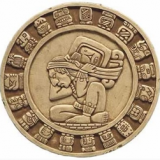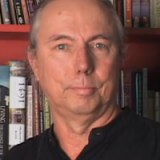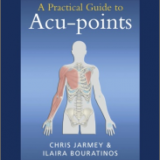Tarot Card Reading on the Execution of Tookie Williams: A Different Path to Peace and Healing
by Gina Rabbin
Tookie Williams was killed early in the morning of December 13, 2005. Some say he was murdered. Others say he deserved to die. Who was Tookie? And who was right?
Stanley Tookie Williams grew up in South Central Los Angeles. Like so many of the young men in his neighborhood, Williams joined a gang, building a “fearsome reputation as a fighter and as a ‘general’ of South Central’s west side”, according to his website. In the early 1970s, he co-founded the Crips, a notorious, vicious, and violent street gang that eventually spread across the United States and even exists in South Africa today.
In 1981, Williams was convicted of four counts of murder, and sent to death row. He is alleged to have killed Albert Owens, a father of two and an Army veteran, and Taiwanese immigrants Yen-I Yang, his wife, Tsai-Shai Chen Yang, and their adult daughter, Yu Chin Yang Lin, who was visiting them, during two separate robberies. Until the day he died, Williams proclaimed his innocence of those four murders.
He was hardly a model prisoner in his early days of incarceration. He was involved in numerous fights with other inmates and made threats against prison staff. In 1987, as a result of continuing bad behavior, Williams began a 6-1/2 year stay in solitary confinement. After two years in solitary, Williams began to look closely at his life, and made the decision to change. His supporters say he began to read the dictionary daily, and spent hours scrutinizing works of philosophy, religion, and literature. He rejected violence, they say, and in 1993, while still in solitary, gave a videotaped speech to a peace summit of gang members in which he pleaded for an end to violence. He began to write a series of children’s books warning of the dangers of gang violence, and in 1996 published “Tookie Speaks Out Against Gang Violence,” an eight-book series for children ages 5 to 10. “Life in Prison,” aimed at teenagers, was published two years later. His “Protocol for Street Peace,” posted on the tookie.com Web site, has been used by rival gangs to broker gang truces.
In 1997, Williams wrote, “…I apologize to you all — the children of America and South Africa — who must cope every day with dangerous street gangs. I no longer participate in the so-called gangster lifestyle, and I deeply regret that I ever did. I am no longer “dys-educated” (disease educated). I am no longer part of the problem. Thanks to the Almighty, I am no longer sleepwalking through life. I pray that one day my apology will be accepted. I also pray that your suffering, caused by gang violence, will soon come to an end as more gang members wake up and stop hurting themselves and others. I vow to spend the rest of my life working toward solutions.”
Says Philip Gasper, “He’s a peacemaker because his message has connected with thousands upon thousands of people. Mr. Williams’ voice has a resonance and a credibility with children.” Mr. Gasper, who chairs the philosophy and religion department at Notre Dame de Namur University in Belmont, California, said, “The man we’re talking about today is very different from the Tookie Williams who went to prison 24 years ago. He is a transformed man.”
And yet, despite pleas of clemency, California Governor Arnold Schwarzenegger decided that Williams should die by lethal injection. He refused to commute Williams’ death sentence to life in prison without parole. “Is Williams’ redemption complete and sincere, or is it just a hollow promise?” Schwarzenegger wrote less than 12 hours before the execution. “Without an apology and atonement for these senseless and brutal killings, there can be no redemption.” And so Stanley Tookie Williams was killed early the morning of December 13, 2005.
In no way do I condone the violence that Williams lived by. Yet I can’t help but wonder what benefit there was in executing him. His attorneys and the high-profile figures who were drawn to Williams’ cause believed Williams was worth more alive than dead. Could he have done more to persuade gang members that the criminal life is not the way to go if he had been allowed to live and continue his work? Is redemption and rehabilitation not more important that retribution and revenge? As always, when faced with questions that confuse and trouble me, I turn to a higher source for guidance, and I use the tarot as one way to access that higher source.
Five cards step from the deck to offer their wisdom. The Five of Cups is the first card to speak. This is a card filled with sadness and sorrow and grief, and it speaks of the emotions that consume people who have lost those they love to violence. It tells us that for many people, this is an unbearable energy to live with, and they have to shut down that part of them that is feeling these emotions in order to get through each day. So instead, they pull in, and act from, the energy of the King of Swords.
This is a cold and unfeeling energy, the King of Swords, such a contradiction to the sadness and grief from which it was created. The King tells us that the only way to survive loss is by staying focused and directed on a specific result, and doing whatever is necessary to ensure that it happens. It is a narrow focus, blocking out everything but the desired outcome. With this energy, nothing exists but the will to see that justice is done, in this case justice being the death of the person who created their grief. Love, forgiveness, even the possibility that something positive can manifest from such tragedy, are buried beneath the rigid control of the King of Swords.
But the Five of Pentacles reminds us that a life whose foundation is built on such a narrow focus of control is a life of loss and loneliness and lack. We cannot manifest joy or happiness when the walls we’ve built to keep out the grief of the Five of Cups while wielding the sword of the King of Swords also has the affect of keeping out the healing that will allow us to move forward in our lives. The energy of the Five of Pentacles is the energy of what we create in the world, and what we’re creating is the physical manifestation of the emotions we’re trying to deny.
So, what is the answer? What do we do with our unbearable loss? If turning away from our sorrow and expressing ourselves as the King of Swords only manifests the creation of a life of lack and loss, how can we go on? How can we make sense of it all? How do we find healing? We must embrace the energy of Justice. This card says that in order to achieve true justice and harmony and healing, we must be willing to look deeper, beneath the surface, to know what is the best outcome. We must be willing to accept that there is another way to honor the lives of those taken by violence. We must be willing to acknowledge that our desire to see the criminal put to death is our pain speaking, not our highest truth. And we must be open and willing to allow in the energy of the Two of Swords.
The Two of Swords tells us we can choose to end the battle, the struggle inside of us. It is time to lay down the swords of vengeance and retribution, and find another way to achieve the peace we seek. It is time to recognize that the possibility exists that even out of the violence that altered our lives, something positive may emerge, if we only let it. It is time, the Two of Swords says, to walk a different path, one whose foundation is built on love and forgiveness and faith.
Tookie’s death did not resurrect the lives of those lost from the violence that was a part of his early years. But maybe his life in prison might have saved others from becoming what Tookie once was and instead helped them to become what Tookie became. Maybe it’s time we all allowed the energy of the Two of Swords to reshape our beliefs about the value of all life and find another way to achieve peace and healing.
I welcome reader questions! If there is an issue you would like to see addressed in a future column, please email me at (Please note that real names of clients are never used in this column.)
 Gina Rabbin is a life-long intuitive and catalyst for clarity. She helps people clarify and resolve their personal and professional issues in order to create more fulfilling and meaningful lives. Currently residing in San Francisco, CA, Gina is available for tarot card readings in person or by telephone. For more information, please visit http://www.ginarabbin.com.
Gina Rabbin is a life-long intuitive and catalyst for clarity. She helps people clarify and resolve their personal and professional issues in order to create more fulfilling and meaningful lives. Currently residing in San Francisco, CA, Gina is available for tarot card readings in person or by telephone. For more information, please visit http://www.ginarabbin.com.






